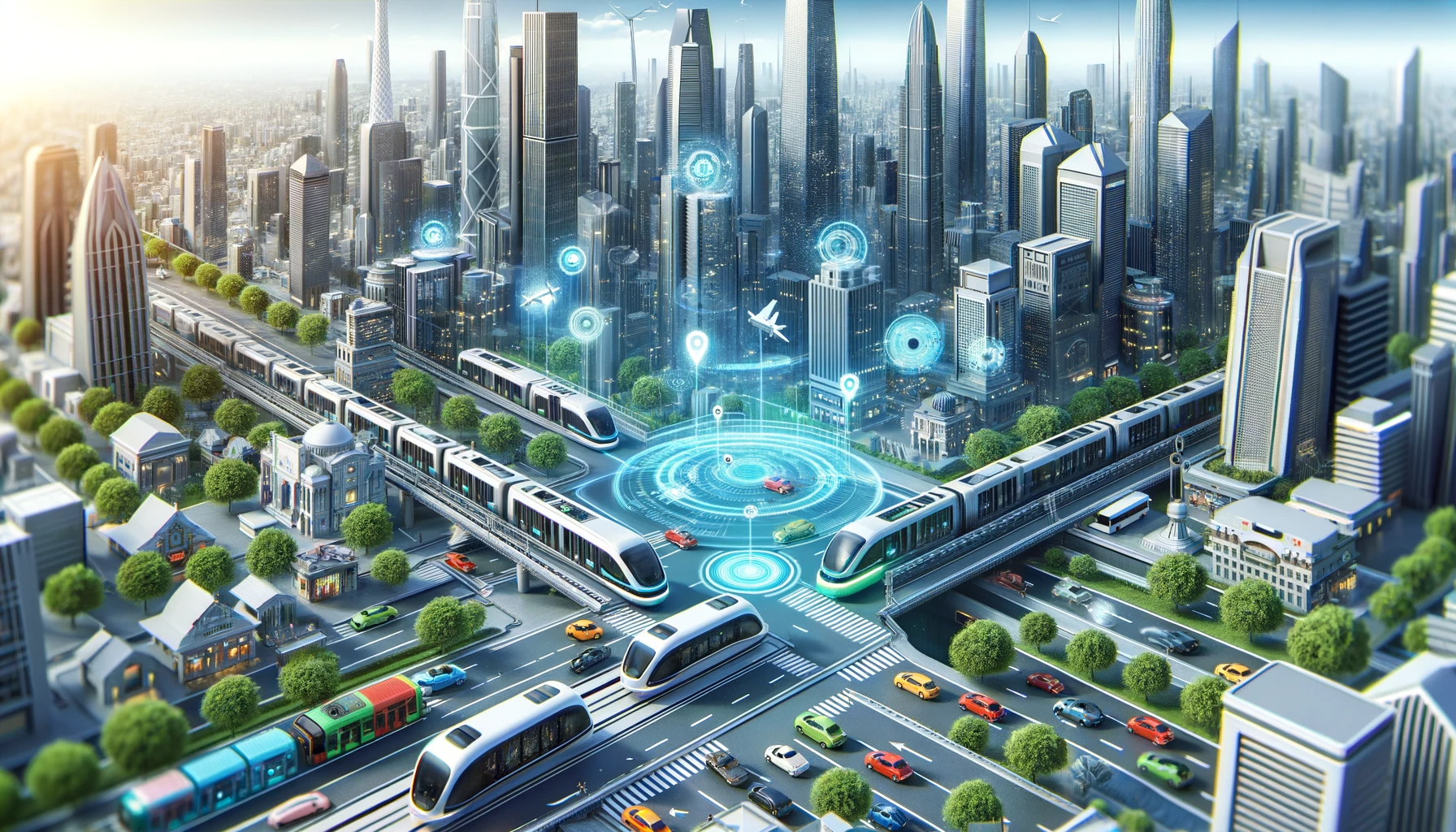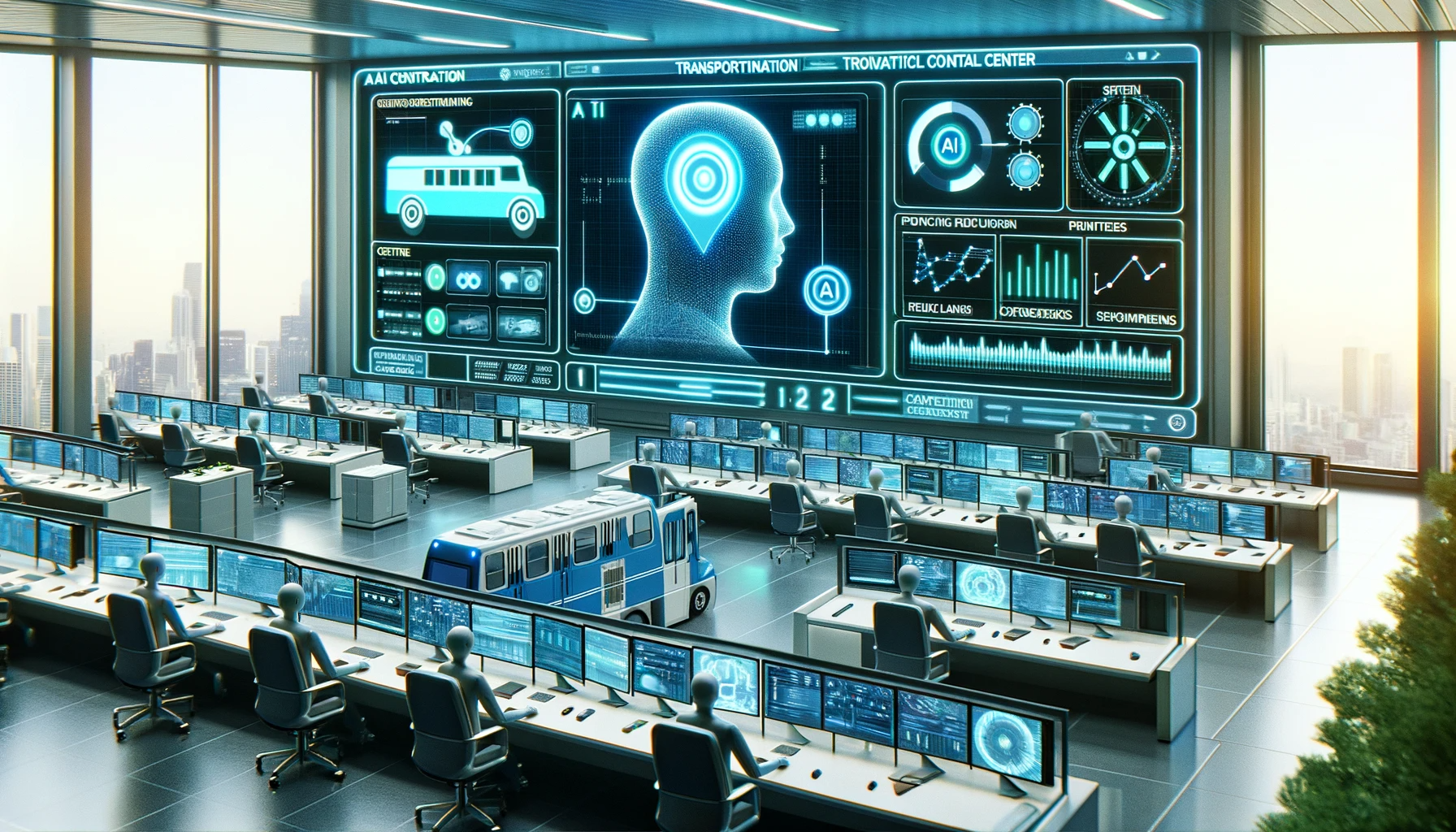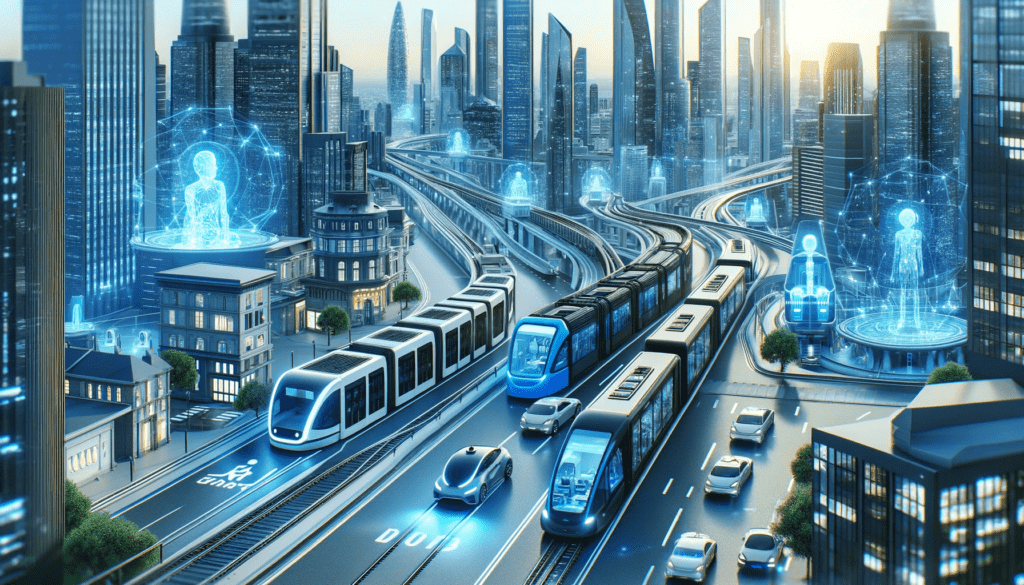Efficient and reliable public transportation is the lifeblood of modern urban centers. It connects people to their workplaces, educational institutions, and recreational areas, making cities more accessible and sustainable. However, many metropolitan areas across the globe grapple with the challenges of congested roads, inefficient routes, and overcrowded transit services. These issues not only lead to frustration among commuters but also contribute to environmental problems such as air pollution and increased carbon emissions.
In the quest for solutions to these pressing urban transportation issues, the integration of Artificial Intelligence (AI) has emerged as a transformative force. AI, with its data-driven algorithms and predictive analytics, holds the potential to revolutionize public transportation systems, making them more efficient, accessible, and environmentally friendly. This article explores how AI can serve as the answer to the challenges faced by public transportation systems worldwide.
As we delve deeper into this topic, we will discuss the fundamental need for efficient public transportation, the role of AI in revolutionizing these systems, and specific areas where AI can make a significant impact. We will examine how AI can optimize routes and schedules, manage traffic flow, enhance the passenger experience, and ultimately contribute to a more sustainable urban future.
Join us on this journey to explore how AI is reshaping the landscape of public transportation and offering innovative solutions to create efficient and accessible transit systems for cities around the world.

The Need for Efficient Public Transportation
Efficient public transportation is a critical component of modern urban life. It plays a pivotal role in reducing traffic congestion, lowering greenhouse gas emissions, and promoting sustainable urban development. As cities continue to grow and the global population becomes increasingly urbanized, the importance of reliable and accessible public transportation becomes even more evident.
Public transportation serves as a lifeline for commuters, offering an affordable and environmentally friendly alternative to private vehicle ownership. It facilitates mobility for individuals of all income levels and reduces the economic burden of owning and maintaining a car. Moreover, efficient public transportation contributes to reduced traffic accidents, improved air quality, and reduced dependence on fossil fuels.
Despite its numerous advantages, many urban areas grapple with the challenges of outdated transportation systems. Overcrowded buses and trains, inconsistent schedules, and inefficient routes are common issues that commuters face daily. Traffic congestion not only leads to wasted time but also has significant economic and environmental consequences. As a result, there is a growing demand for innovative solutions to enhance the performance of public transportation networks.
AI in Public Transportation
Artificial Intelligence (AI) has emerged as a powerful tool with the potential to address the shortcomings of traditional public transportation systems. AI encompasses a range of technologies that enable machines to perform tasks that typically require human intelligence, such as problem-solving, decision-making, and pattern recognition. In recent years, AI has found applications in various fields, including healthcare, finance, and transportation.
In the context of public transportation, AI holds the promise of optimizing operations, improving the passenger experience, and enhancing overall system efficiency. AI technologies, including machine learning and data analytics, can analyze vast amounts of data in real-time, providing valuable insights into passenger demand, traffic patterns, and system performance. This data-driven approach allows transportation authorities to make informed decisions and implement dynamic changes to better serve commuters.
AI can be applied to multiple aspects of public transportation, from route optimization and scheduling to predictive maintenance and traffic management. By harnessing AI’s capabilities, transit agencies can create more responsive and adaptive systems that cater to the needs of their passengers while reducing operational costs and environmental impacts.
Optimizing Routes and Schedules
One of the primary areas where AI can make a significant impact in public transportation is the optimization of routes and schedules. Traditional static routes and schedules often struggle to adapt to the dynamic nature of urban environments. Passengers may experience delays, overcrowded vehicles, or inefficient routes that lead to longer travel times.
AI algorithms can analyze real-time data, including passenger demand, traffic conditions, and weather patterns, to optimize routes and schedules dynamically. These algorithms take into account various factors, such as peak travel times and traffic congestion, to ensure that transit services align with the actual needs of commuters. This approach leads to reduced waiting times, shorter travel durations, and improved overall reliability.
Furthermore, AI-powered predictive analytics can anticipate changes in passenger demand based on historical data and events. For example, during major sporting events or festivals, AI can recommend additional transportation services to accommodate the expected surge in passengers. This flexibility allows transit agencies to provide a more responsive and efficient service that adapts to the city’s ever-changing dynamics.
Traffic Management and Congestion Reduction
Traffic congestion is a common issue in urban areas, resulting in wasted time, increased air pollution, and economic losses. AI plays a vital role in managing traffic flow and reducing congestion by leveraging real-time data and advanced analytics.
AI-driven traffic management systems use sensors, cameras, and other data sources to monitor traffic conditions throughout the city. These systems can detect accidents, road closures, or traffic jams in real-time and automatically adjust traffic signals and routes to minimize disruptions. By optimizing traffic flow, AI contributes to shorter commute times, reduced fuel consumption, and improved air quality.
Predictive traffic analytics is another area where AI shines. By analyzing historical data and considering factors such as special events or construction projects, AI can forecast traffic patterns and suggest alternative routes to commuters. This proactive approach empowers commuters to make informed decisions and avoid congested areas, leading to smoother traffic flow throughout the city.
In addition to managing vehicular traffic, AI can also enhance pedestrian and cyclist safety by detecting and alerting authorities to potential hazards. This multi-faceted approach to traffic management makes urban transportation systems safer, more efficient, and more resilient to unexpected events.
Enhancing the Passenger Experience
AI not only improves the operational aspects of public transportation but also enhances the overall passenger experience. Commuters increasingly expect personalized, convenient, and reliable transit services, and AI technologies are instrumental in meeting these expectations.
One way AI enhances the passenger experience is through real-time information and communication. Mobile apps and digital signage at transit stops can provide commuters with up-to-date information on routes, schedules, delays, and service disruptions. AI algorithms can predict real-time arrival and departure times, allowing passengers to plan their journeys more effectively and minimize waiting times.
Moreover, AI-driven chatbots and virtual assistants can provide immediate assistance to passengers. These AI-powered systems can answer inquiries, offer travel recommendations, and even process ticket purchases or fare payments. By reducing the reliance on human staff for routine tasks, transit agencies can allocate resources more efficiently and ensure a higher level of service.
AI also contributes to safety and security within public transportation systems. Video surveillance systems equipped with AI algorithms can detect unusual behavior or potential threats, allowing authorities to respond promptly to any security concerns. Additionally, AI can assist in contactless ticketing and fare collection, reducing the risk of disease transmission in high-traffic areas.
Environmental Benefits of AI in Public Transportation
Efforts to reduce greenhouse gas emissions and combat climate change have made sustainability a top priority for urban planners and transit agencies. AI can play a significant role in promoting sustainability within public transportation systems.
One of the primary ways AI contributes to sustainability is through the optimization of transit routes and vehicle utilization. By minimizing travel distances and reducing the number of empty seats on buses and trains, AI-driven solutions decrease fuel consumption and emissions. This not only benefits the environment but also reduces operational costs for transit agencies.
Additionally, AI can support the transition to electric and hybrid public transportation fleets. AI algorithms can help determine the most suitable routes and schedules for electric vehicles, considering factors such as battery range and charging infrastructure availability. This transition to cleaner transportation options aligns with broader sustainability goals and reduces the carbon footprint of urban transit systems.
AI-powered traffic management systems also contribute to environmental sustainability by reducing traffic congestion and idling times. As vehicles spend less time stuck in traffic, fuel consumption and emissions decrease. Consequently, the integration of AI in traffic management supports cleaner air and a healthier urban environment.
Challenges and Ethical Considerations
While the integration of AI into public transportation systems offers numerous benefits, it also presents challenges and ethical considerations that must be addressed.
One of the primary challenges is the potential for job displacement among transit workers. As AI automates certain tasks, such as fare collection or data analysis, there may be a reduced need for human staff in some roles. Transit agencies must carefully manage this transition by providing retraining opportunities and ensuring a just transition for affected workers.
Another challenge is the potential for data privacy breaches. Collecting and analyzing vast amounts of data from passengers’ travel patterns and behaviors raises concerns about the security and responsible use of this information. Transit agencies must implement robust data protection measures and adhere to strict privacy regulations to safeguard passengers’ personal information.
Ethical considerations also come into play when AI algorithms make decisions that affect passenger experiences. For instance, the allocation of transportation resources or the setting of fare prices based on predictive analytics may inadvertently discriminate against certain groups or communities. Ensuring fairness, equity, and transparency in AI-driven decisions is crucial to avoid reinforcing existing inequalities.

Future Outlook and Conclusion
The future of public transportation is intertwined with the adoption of AI technologies. As cities continue to grow and face increasing urbanization, the demand for efficient, accessible, and sustainable transit systems will only intensify. AI offers a path toward meeting these demands while addressing long-standing challenges in the field of public transportation.
Looking ahead, we can expect to see further innovations in AI-driven public transportation solutions. Advances in autonomous vehicles and smart city infrastructure will likely play a pivotal role in shaping the future of urban transit. Additionally, the continued integration of AI into public transportation systems will lead to more seamless, convenient, and eco-friendly commuting experiences for passengers.
In conclusion, AI is indeed the answer to efficient public transportation systems. By optimizing routes, schedules, and traffic management, enhancing the passenger experience, promoting sustainability, and addressing challenges responsibly, AI is transforming urban transit into a more efficient, accessible, and environmentally friendly mode of transportation. As cities evolve, AI will continue to revolutionize public transportation, making it a cornerstone of modern, sustainable urban living.
